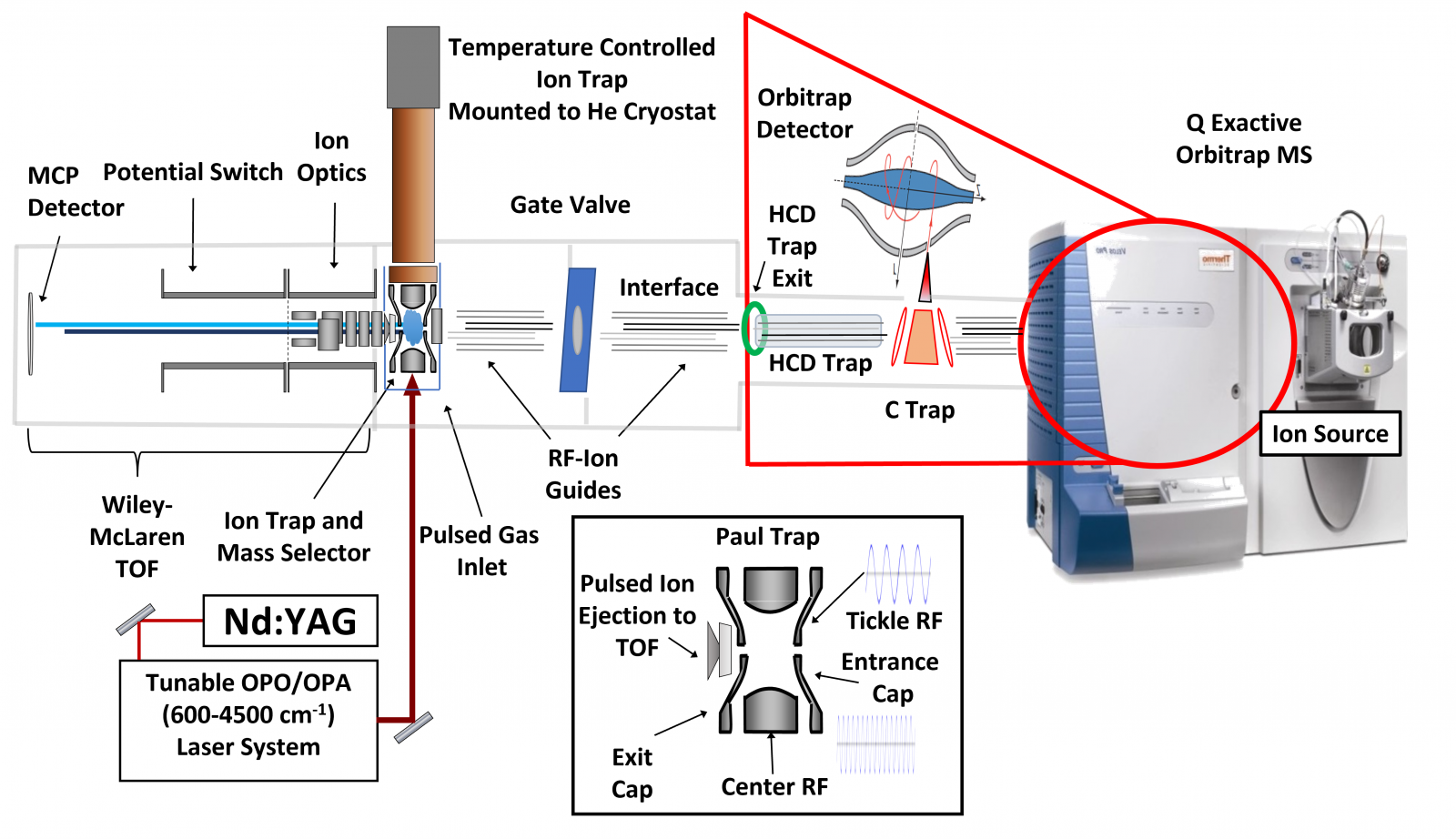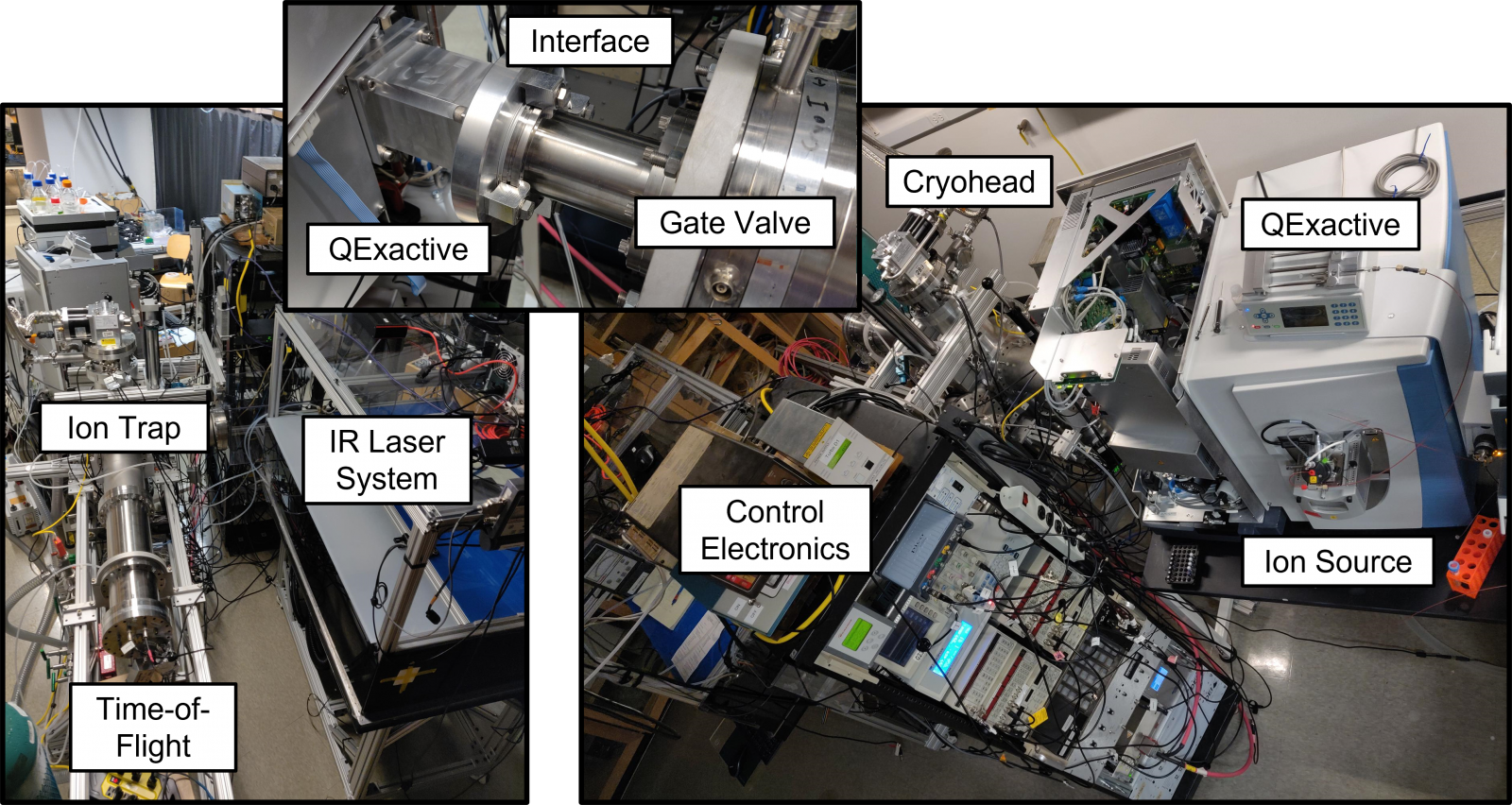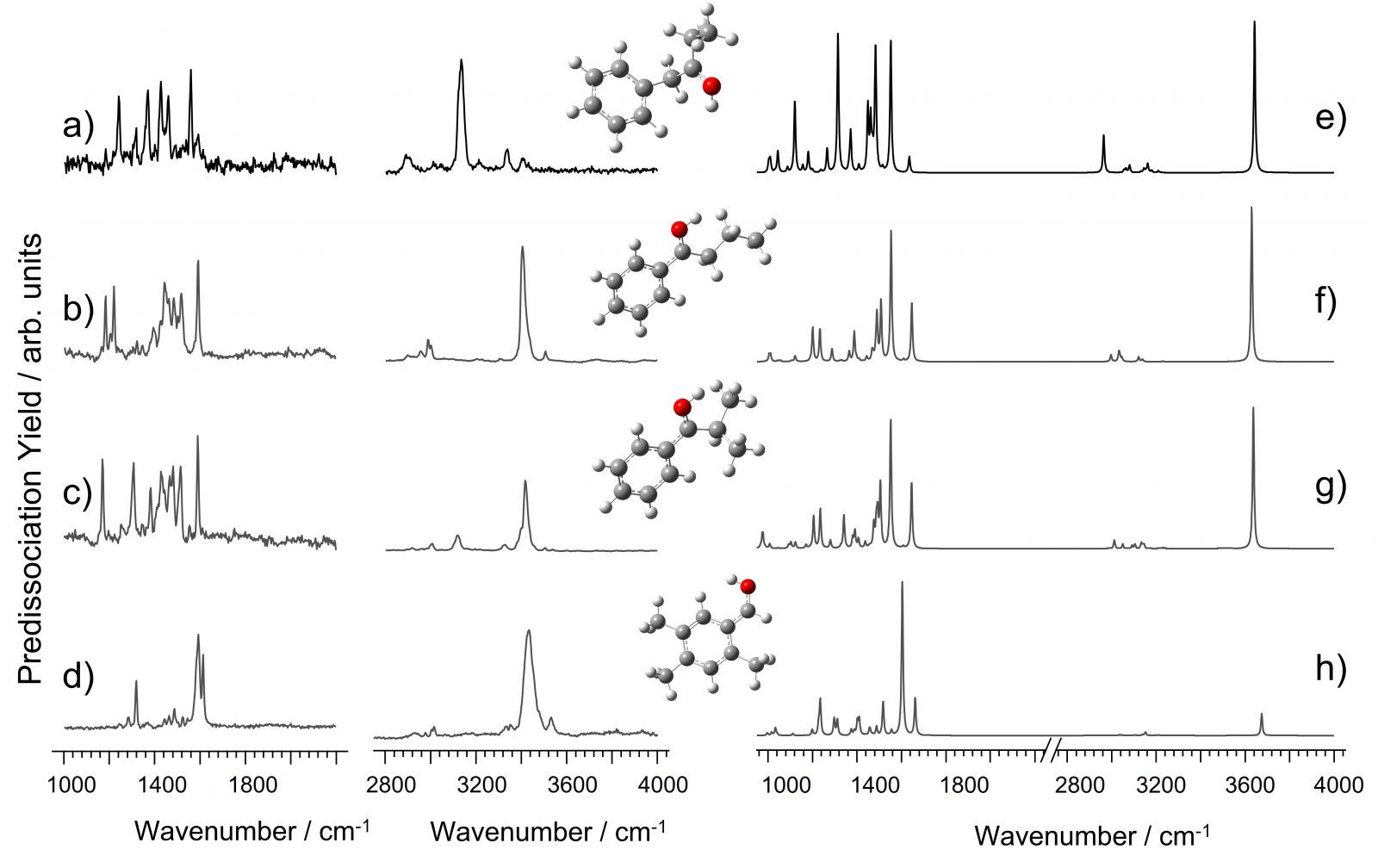Structural insights into cold, mass selected ions
Infrared action spectroscopy of cold, mass selected and tagged ions in the gas phase allows for insights into the three-dimensional conformation of molecules and their fragments, binding sites of solvation events and other types of inter-molecular interactions. The derived IR data can be compared to state-of-the-art quantum mechanical calculations and the cryogenic ion vibrational predissociation spectroscopy (CIVP) technique has already been applied to a wide range of systems, including size selected water clusters, ionic liquids, drug metabolites, peptides, ion-molecule reactions (with atmospheric relevance), metal-organic complexes and small molecule activation, amongst others (see publication list of the Johnson group at Yale).
Access to this kind of research instrumentation in a university setting is unique to the CBIC at Yale and would otherwise require collaborations to a research group or an (inter)national core facility. Training and measurements on the instrument will introduce users to a broad range of physical chemistry concepts and techniques and will be a valuable asset to the education of grad students and postdocs. Furthermore, liquid-chromatography based separation of compounds from e.g. biological samples, in combination with high-resolution mass spectrometry and CIVP spectroscopy will allow for unprecedented characterization of natural products.
Method:
We built and commissioned a hybrid mass spectrometry/optical spectroscopy instrument for chemical analysis, based on a commercial Q Exactive Orbitrap instrument from Thermo Fisher Scientific, equipped with an electrospray ion source (Scheme 1). The optical spectroscopy extension is based on a cryogenically cooled Paul Trap for ion storage, cooling and “tagging” of the ions with a small molecule (e.g. N2 or D2 tag) and time-of-flight detection of the ions.
Infrared spectra of the cold and tagged ions are taken in an action spectroscopy mode. First, in-trap mass isolation of the tagged ions using a “tickle” frequency (Figure 1, Paul Trap inset), followed by the irradiation of the tagged ions with photons from a tunable OPO/OPA infrared laser system (Nd:YAG 1064nm pulse laser, OPO/A output range 600 – 4500 cm-1), and subsequent detection of the photofragment of the tagged ion as a function of laser frequency. Infrared spectra are taken in a linear excitation mode and are normalized to the laser energy per pulse/frequency. This technique is also known as cryogenic ion vibrational predissociation spectroscopy (CIVP). The results are readily comparable to density functional theory (DFT) calculations and other ab-initio computational methods (Figure 1).
The instrument is housed in the Chemistry and Biology Instrument Center (CBIC) and managed by staff member Dr. Fabian Menges for general use by the chemical and biological sciences at Yale, and for collaborations with academic users outside of Yale. The instrument was built with user control in mind and most data acquisition parameters can be controlled remotely. A standard operating protocol is available and user training has started.

Considerations for data collection:
We are open for user training on the instrument (Yale internal and external). Most parameters can be controlled remotely through software interfaces and digitized data collection. It’s a complex piece of equipment and we tried to build it as user-friendly as possible, nevertheless, on-site training and data acquisition by the user is key to a successful project. Caution: Operation of this instrument requires working with Class IV laser systems!
Samples are run in a direct injection mode (LC injection is not yet combined with spectroscopic characterization) and must be moderately clean to prevent ion suppression of the target species. 5 to 10mL of a 1 x 10(-5) molar sample should suffice for collecting a set of spectra.
Please send an informal proposal for a measurement project to Dr. Fabian Menges. The project should describe the number of target molecules, their structure and the nature of the problem that you like to solve with the gas phase IR data. Interpretation of the data often relies on quantum mechanical calculations. Users can be trained on using Gaussian for standard DFT calculations.
Cost for data collection: $250 per molecule (subject to change, please inquire options for subsidized data runs)
Acknowledgement:
The instrument was designed and built by Dr. Fabian Menges with the help of the Johnson group at Yale. We thank the NSF for sponsoring the MRI Grant 1828190: “Development of a hybrid mass spectrometry platform with mass-selective optical spectroscopy of cryogenic ions”. The grant and the CBIC need to be acknowledged in any publication and co-authorship is highly appreciated.
